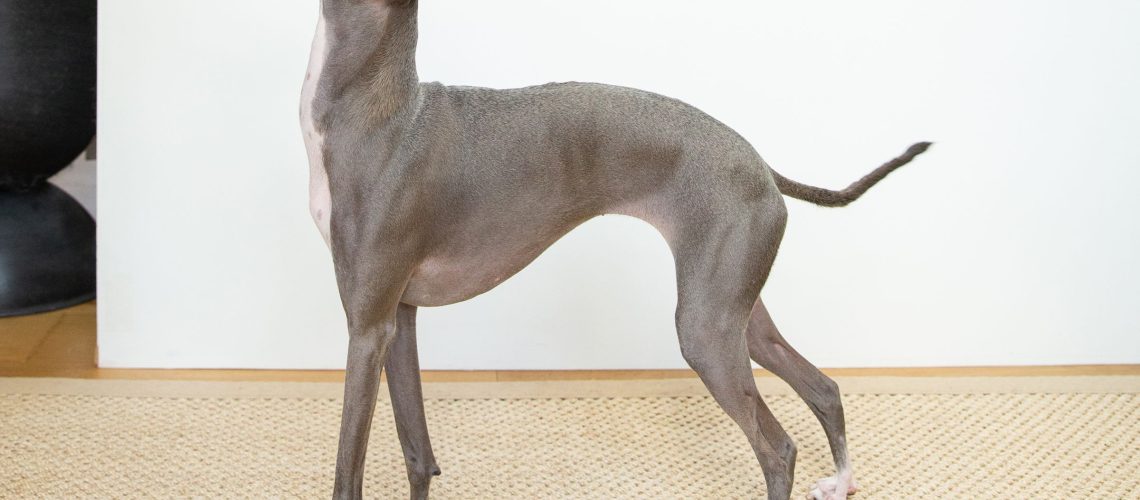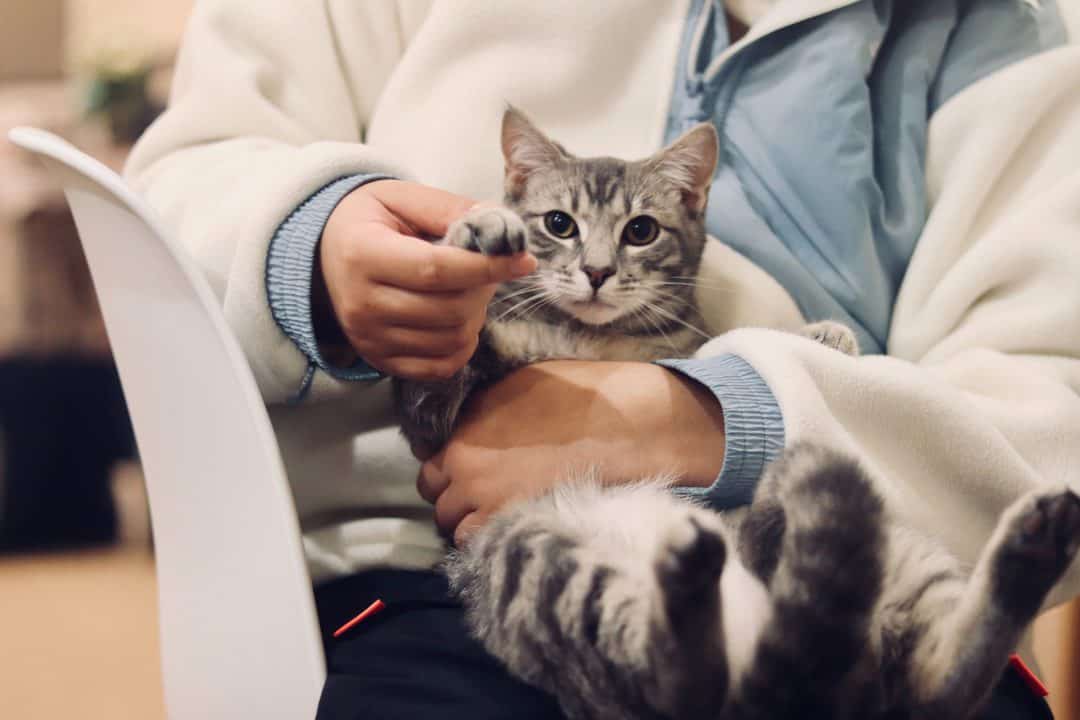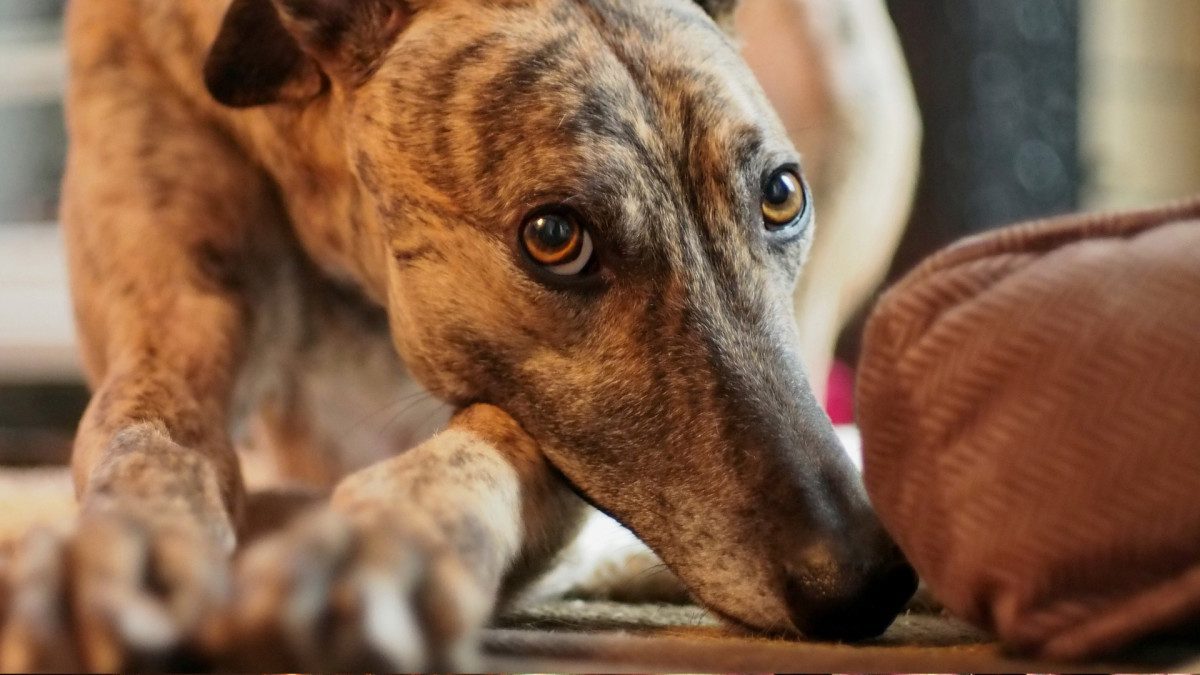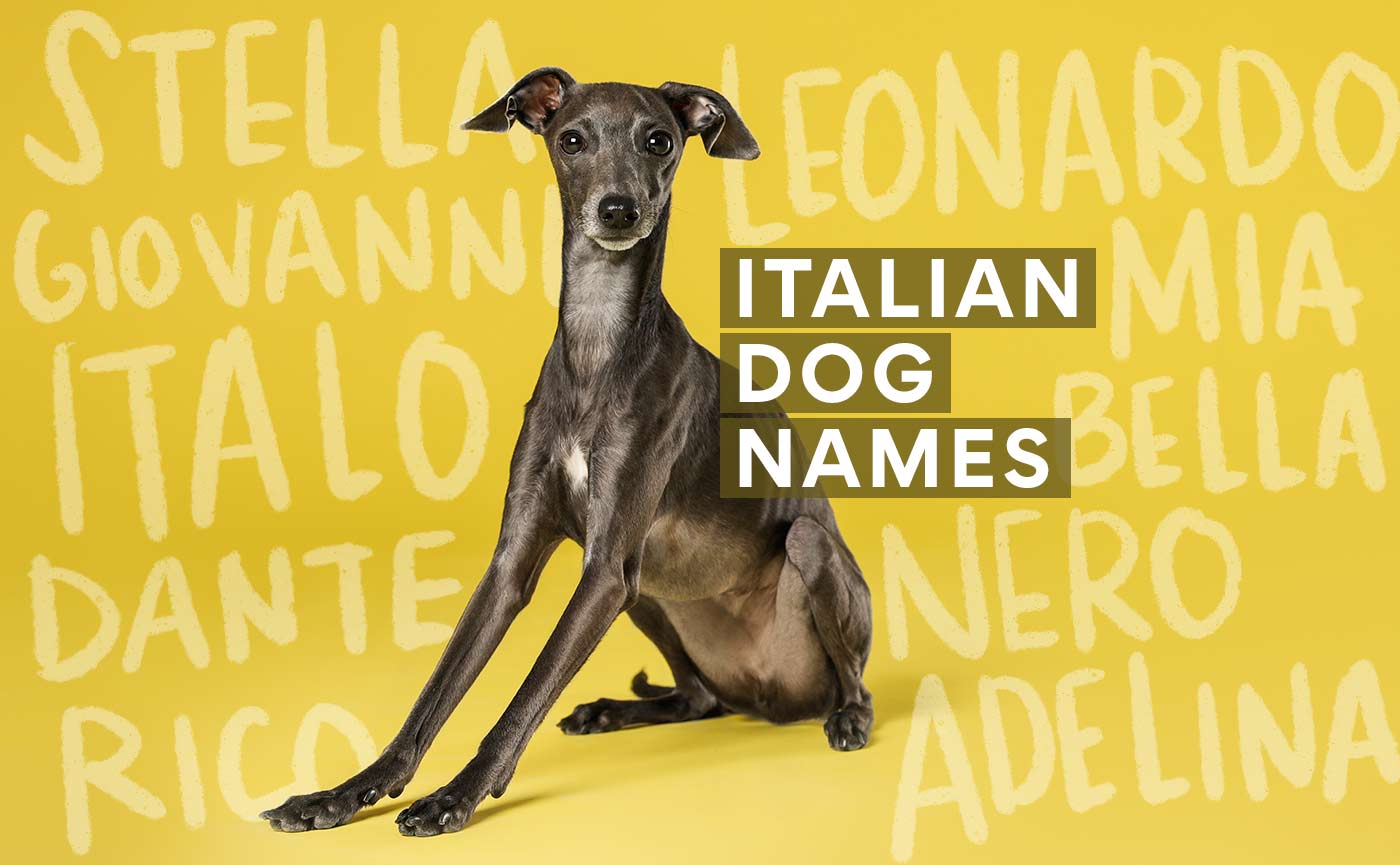Key Takeaways:
- Italian Greyhounds are small and delicate dogs that require gentle handling and care.
- They have a thin coat that offers little protection from cold weather, so they should be kept warm with clothing or blankets.
- Regular exercise is essential for Italian Greyhounds to prevent obesity and maintain their physical and mental well-being.
- These dogs are prone to dental issues, so daily teeth brushing and regular veterinary check-ups are necessary for their oral health.
- Italian Greyhounds are known for their affectionate nature and strong bond with their owners, making them excellent companions.
Are you ready to embark on a journey into the world of Italian Greyhounds? These elegant and graceful dogs have captured the hearts of many dog lovers, and it's not hard to see why. From their sleek physique to their affectionate nature, Italian Greyhounds have a charm that is hard to resist. But there's more to these beautiful creatures than meets the eye. Understanding their unique characteristics and learning how to properly care for them can make all the difference in creating a happy and fulfilling life together. So, whether you're considering adding an Italian Greyhound to your family or simply want to expand your knowledge about this fascinating breed, join us as we uncover the secrets of these remarkable dogs. Get ready for a captivating journey filled with valuable insights and practical tips that will enhance your understanding of Italian Greyhounds and help you provide them with the love and care they deserve. Let's dive in!
What is an Italian Greyhound and how is it different from other dogs?
An Italian Greyhound is a small breed of dog that belongs to the sighthound family. They are known for their slender build, sleek coat, and graceful appearance. Unlike other dogs, Italian Greyhounds have a unique combination of speed, agility, and elegance. They are often compared to miniature versions of Greyhounds.
One major difference between Italian Greyhounds and other dogs is their size. Italian Greyhounds are much smaller in comparison to most breeds. They typically weigh between 7-15 pounds and stand around 13-15 inches tall at the shoulder. This makes them perfect for people who live in apartments or have limited space.
Physical Appearance
Italian Greyhounds have a slim body with long legs and a deep chest. Their head is narrow with a slightly domed skull, and they have dark, expressive eyes. Their ears are small and folded back, giving them a distinctive look. The coat of an Italian Greyhound can come in various colors including black, blue, fawn, red, or cream.
Distinguishing Features:
- Slim body with long legs
- Narrow head with expressive eyes
- Folded back ears
- Variety of coat colors
Temperament
Italian Greyhounds are known for their affectionate and gentle nature. They form strong bonds with their owners and enjoy being part of the family. Despite their small size, they can be quite fearless and confident. However, they can also be sensitive to harsh treatment or loud noises.
Personality Traits:
- Affectionate
- Gentle
- Fearless
- Sensitive
How big do Italian Greyhounds get and what do they look like?
Size and Appearance
Italian Greyhounds are small-sized dogs, typically weighing between 7 to 14 pounds (3 to 6 kilograms) and standing around 13 to 15 inches (33 to 38 centimeters) tall at the shoulder. They have a slender and graceful build, resembling miniature versions of their larger Greyhound relatives. With their sleek bodies, long legs, and deep chests, Italian Greyhounds possess an elegant appearance that is often admired.
Coat and Colors
The coat of an Italian Greyhound is short, fine, and glossy. It lies close to their body, providing minimal protection against cold weather. These dogs come in a variety of colors including black, blue, cream, fawn, red, or any combination of these shades. Some Italian Greyhounds may also have white markings on their chest or feet. Their coat requires minimal grooming due to its short length.
Distinctive Features
Italian Greyhounds have some distinctive features that set them apart from other breeds. One notable feature is their large eyes which are usually dark in color. Their ears are thin and delicate, often folded back when relaxed but alertly perked up when curious or attentive. Another unique characteristic is their long tail that tapers towards the tip.
Overall, Italian Greyhounds possess a dainty yet athletic appearance with a charming mix of elegance and playfulness.
What are the personalities of Italian Greyhounds like and how do they act around people?
Italian Greyhounds have delightful personalities that make them wonderful companions for individuals or families alike.
These dogs are known for being affectionate and loving towards their owners. They enjoy spending time with people and often form strong bonds with their family members. Italian Greyhounds are typically gentle and sensitive, making them great pets for households with older children who understand how to handle small dogs with care.
While they may be reserved around strangers initially, Italian Greyhounds can warm up quickly and become friendly towards new people. They tend to thrive on attention and love being the center of their owner's world. Due to their social nature, Italian Greyhounds generally get along well with other dogs and can even coexist peacefully with cats if properly introduced.
However, it is important to note that Italian Greyhounds can be prone to separation anxiety if left alone for long periods. They prefer the company of their loved ones and may become anxious or develop destructive behaviors when left alone for extended periods of time.
In summary, Italian Greyhounds are affectionate, sensitive, and sociable dogs that enjoy being around people and forming strong bonds with their owners.
How much exercise does an Italian Greyhound need to stay healthy and happy?
Italian Greyhounds have moderate exercise needs compared to some other breeds. While they do enjoy a good sprint now and then, they are generally content with shorter bursts of activity interspersed throughout the day.
Aim for at least two 15-20 minute walks or play sessions each day to keep your Italian Greyhound physically fit. These walks not only provide exercise but also mental stimulation as they explore their surroundings. Additionally, engaging in interactive games like fetch or tug-of-war can help satisfy their natural instincts while providing physical exertion.
It's important to note that Italian Greyhounds have thin skin which makes them more susceptible to extreme temperatures. During hot weather, it's crucial to avoid exercising them during the hottest parts of the day to prevent overheating. Similarly, during cold weather, consider using doggy sweaters or coats to keep them warm during outdoor activities.
Remember that every dog is unique, so it's essential to observe your Italian Greyhound's energy levels and adjust their exercise routine accordingly. Regular exercise not only keeps them physically healthy but also helps prevent behavioral issues that may arise from pent-up energy.
Are there any health problems that owners should know about when taking care of an Italian Greyhound?
Italian Greyhounds are generally healthy dogs, but like all breeds, they can be prone to certain health conditions. It's important for owners to be aware of these potential issues and take appropriate measures to ensure their pet's well-being.
One common health concern in Italian Greyhounds is dental disease. Their small mouths can lead to overcrowding of teeth, making them more susceptible to plaque buildup and gum disease. Regular dental care, including brushing their teeth and providing appropriate chew toys, can help maintain good oral hygiene.
Another condition that may affect Italian Greyhounds is patellar luxation, which is the dislocation of the kneecap. This can cause lameness or difficulty walking. While not all Italian Greyhounds develop this condition, regular veterinary check-ups can help detect any early signs and provide necessary treatment if needed.
Additionally, due to their thin skin and lack of body fat, Italian Greyhounds are more prone to injuries such as cuts or scrapes. It's important to handle them with care and protect them from rough play or hazardous environments.
Regular visits to the veterinarian for vaccinations, check-ups, and preventive care are crucial in maintaining the overall health of your Italian Greyhound. By being proactive in monitoring their well-being and addressing any concerns promptly, you can help ensure a long and happy life for your furry companion.
How often should you groom an Italian Greyhound and what grooming needs do they have?
Italian Greyhounds have low grooming needs compared to many other breeds thanks to their short coat. However, regular maintenance is still necessary to keep them looking their best.
Brushing their coat once or twice a week with a soft-bristle brush helps remove loose hairs and keeps their coat shiny. This also provides an opportunity to check for any skin issues or abnormalities that may require attention.
Nail trimming is another important aspect of grooming for Italian Greyhounds. Their nails can grow quickly, so it's recommended to trim them every 2-3 weeks to prevent overgrowth and discomfort. If you are unsure about how to properly trim your dog's nails, consult a professional groomer or veterinarian for guidance.
Italian Greyhounds are prone to dental problems, so regular teeth brushing is essential for maintaining good oral hygiene. Aim to brush their teeth at least two to three times a week using a dog-friendly toothpaste and toothbrush. This helps prevent plaque buildup and reduces the risk of gum disease.
Lastly, keeping your Italian Greyhound's ears clean is crucial in preventing ear infections. Check their ears regularly for any signs of redness, discharge, or odor. Gently wipe the inside of their ears with a damp cloth or use an ear cleaning solution recommended by your veterinarian if necessary.
By following these simple grooming practices on a regular basis, you can help keep your Italian Greyhound looking and feeling great while minimizing the risk of common grooming-related issues.
Tips for training an Italian Greyhound in obedience and socialization
Training an Italian Greyhound requires patience, consistency, and positive reinforcement techniques. Here are some tips to help you effectively train your furry friend:
1. Start early: Begin training your Italian Greyhound as soon as you bring them home. Puppies have a natural curiosity and eagerness to learn, making it easier to shape their behavior from an early age.
2. Use positive reinforcement: Reward-based training methods work best with Italian Greyhounds. Offer praise, treats, or playtime whenever they exhibit desired behaviors. This positive reinforcement encourages them to repeat those behaviors in the future.
3. Keep training sessions short and fun: Italian Greyhounds have a relatively short attention span, so keep training sessions brief, around 10-15 minutes each. Make them enjoyable by incorporating play and using a variety of rewards.
4. Socialize extensively: Expose your Italian Greyhound to various people, animals, and environments from an early age to ensure they develop good social skills. Take them on walks, introduce them to friendly dogs, and allow supervised interactions with new people.
5. Be patient and consistent: Italian Greyhounds can be sensitive, so avoid harsh or forceful training methods as it may cause fear or anxiety. Instead, be patient, gentle, and consistent in your approach. Consistency helps them understand what is expected of them.
6. Focus on basic commands: Teach your Italian Greyhound essential commands such as sit, stay, come, and leave it. These commands provide the foundation for good behavior and safety.
7. Seek professional help if needed: If you encounter difficulties or feel overwhelmed during the training process, don't hesitate to seek guidance from a professional dog trainer who specializes in positive reinforcement techniques.
Remember that every dog learns at their own pace, so be understanding and adapt your training methods accordingly. With time and dedication, you can shape your Italian Greyhound into a well-behaved and sociable companion.
These tips will help you establish a strong bond with your Italian Greyhound while ensuring they grow up to be obedient and well-adjusted members of your family.
In conclusion, Italian Greyhounds are small and elegant dogs with a gentle and affectionate nature. They require regular exercise, proper grooming, and lots of love and attention to thrive as pets.
Are Italian Greyhounds high maintenance?
Italian Greyhounds require minimal grooming due to their short coat. Just a quick brush once a week is enough to keep them well-maintained.
What is the personality of an Italian Greyhound?
Personality: Italian Greyhounds have a sweet and gentle nature, and they are very friendly dogs who crave affection. If they don't receive enough attention, they may become shy, hyperactive, or both. They tend to be loyal to one person or one family and may appear aloof towards unfamiliar people.
Are Italian Greyhounds easy to care for?
Taking care of an Italian Greyhound is relatively easy in terms of grooming because their short, fine hair requires minimal attention. However, their thin bodies and lack of insulation in their coat means they are more susceptible to the cold.
What are the pros and cons of an Italian Greyhound?
Italian greyhounds are known for their athleticism, agility, and intelligence. However, their stubbornness can pose challenges when it comes to house training. Luckily, with a training program that includes praise, consistency, and rewards, you can successfully train your Italian greyhound. Additionally, it's important to note that these dogs prefer warmer climates and thrive in warm weather.
What are the cons of Italian Greyhounds?
Italian Greyhounds are highly dependent and dislike being left alone. Therefore, if you have a busy schedule and cannot bring them along, they may not be the suitable breed for you.
Are Italian Greyhounds hard to potty train?
A majority of 57% of people reported difficulties in potty training their Italian Greyhound. This indicates that it is not merely a rumor, but a fact that Italian Greyhounds, similar to other small dog breeds, can present challenges when it comes to potty training.

















